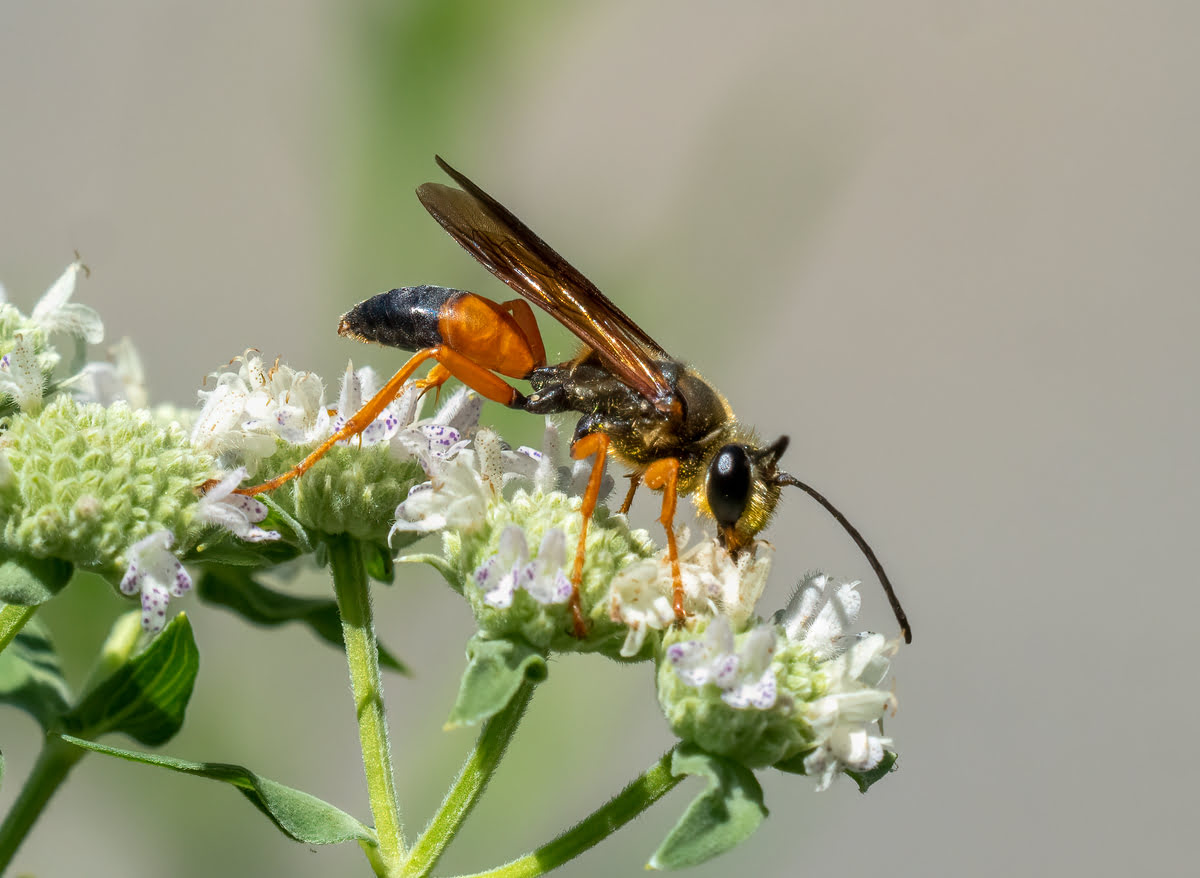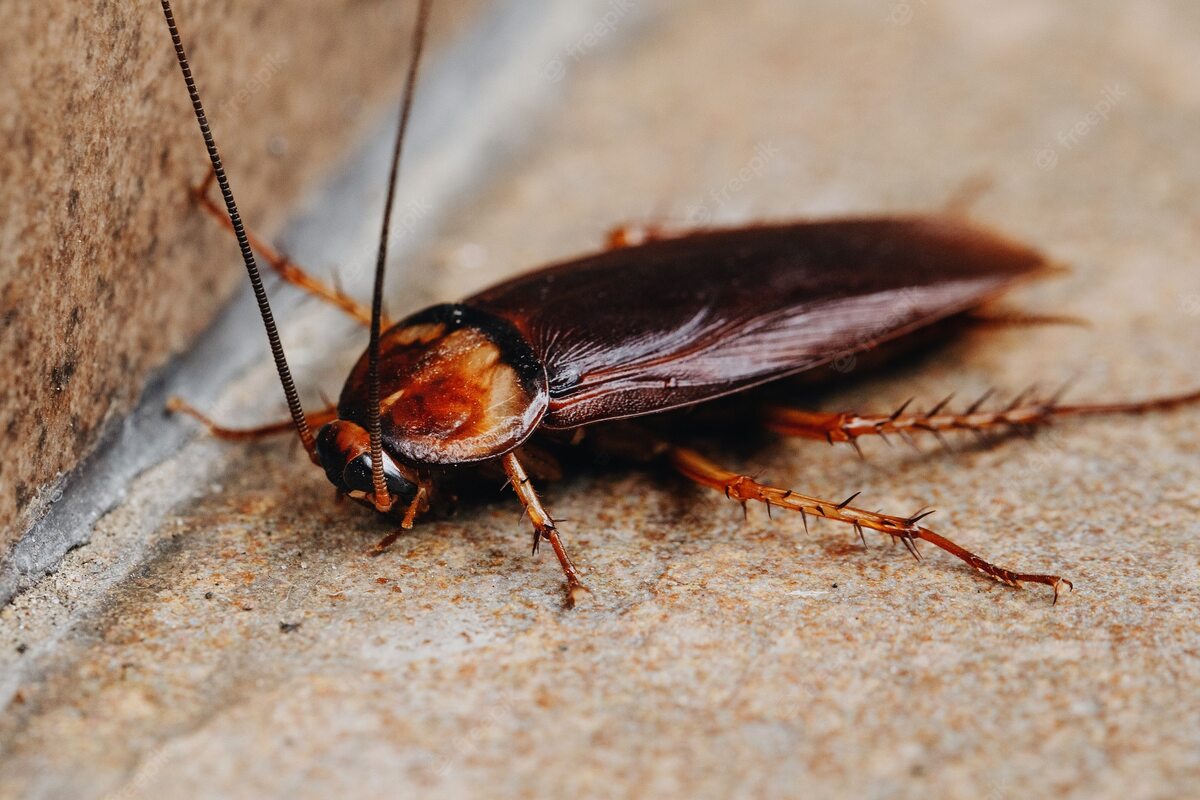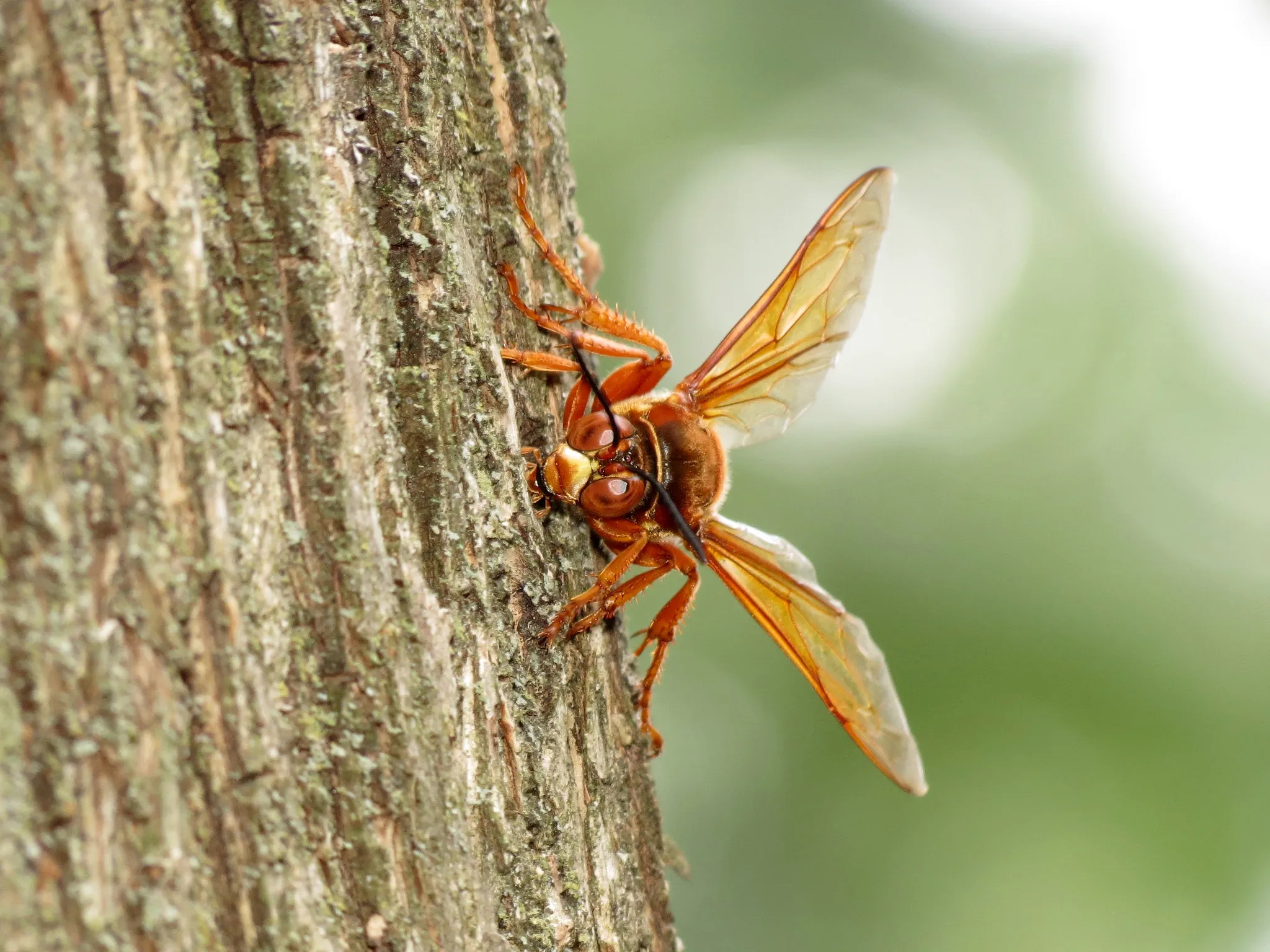Home>Gardening News and Trends>Latest News>What Insects Leave Stingers In Skin


Latest News
What Insects Leave Stingers In Skin
Modified: January 22, 2024
Stay updated with the latest news on what insects leave stingers in skin. Learn about different types of insect stings, their effects, and how to treat them effectively.
(Many of the links in this article redirect to a specific reviewed product. Your purchase of these products through affiliate links helps to generate commission for Chicagolandgardening.com, at no extra cost. Learn more)
Table of Contents
Introduction
Welcome to the fascinating world of insects and their stingers! Insects form a significant part of our ecosystem, but some of them possess stingers that can cause discomfort and pain when they come into contact with our skin. This article aims to explore the various types of insects that leave stingers in the skin, as well as the characteristics of these stingers and the reactions they can elicit.
It’s important to understand that insects with stingers have evolved this defense mechanism for their own survival and protection. When they feel threatened or disturbed, these insects will deploy their stingers as a means of defense. While their intent is not to harm humans, we can unintentionally trigger their defensive response by unknowingly coming into contact with them.
Throughout this article, we will delve into the different types of insects that possess stingers, such as bees, wasps, hornets, and ants. We will also explore the unique characteristics of their stingers, including their size, shape, and functionality. Understanding these distinct features can provide us with valuable insights into the potential effects and risks associated with insect stings.
Moreover, we will examine the symptoms and reactions that various individuals may experience when they are stung by insects. These reactions can range from mild irritation and redness to more severe and potentially life-threatening allergic reactions. By familiarizing ourselves with these symptoms, we can better equip ourselves to respond effectively in the event of an insect sting.
Furthermore, we will discuss the different treatment options available for insect stings. From over-the-counter creams and ointments to natural remedies and medical interventions, there are numerous ways to alleviate the discomfort and manage the symptoms caused by insect stings. It’s essential to understand these treatment options to ensure prompt and appropriate action when needed.
Lastly, we will explore preventive measures and safety precautions that can help minimize the risk of insect stings. By being aware of our surroundings, taking necessary precautions, and adopting proper behavior in specific environments, we can significantly decrease the likelihood of encountering insects with stingers and experiencing a sting.
So, join us on this informative journey as we unravel the intriguing world of insects with stingers and gain valuable insights into how to navigate encounters with these remarkable creatures.
Types of Insects with Stingers
Several insects in the animal kingdom possess stingers, each with its own unique characteristics and behavior. Understanding the different types of insects that can leave stingers in the skin can help us better prepare and take precautionary measures. Let’s take a closer look at some of the most common insects with stingers:
- Bees: Bees are well-known for their stingers, which are attached to their abdomens. When a bee stings, it leaves behind its stinger, which continues to pump venom into the victim’s skin even after the bee flies away. Bees are generally non-aggressive and sting only when they perceive a threat to their colony or themselves.
- Wasps: Wasps, similar to bees, have stingers attached to their abdomens. However, unlike bees, wasps can sting multiple times as their stingers do not get detached from their bodies. Wasps can be more aggressive than bees and may sting even in the absence of a direct threat if they perceive their territory is being invaded.
- Hornets: Hornets are a type of wasp known for their larger size. They have potent stingers that deliver a more painful and intense sting compared to bees and wasps. Hornets are highly protective of their nests and can become extremely aggressive if they feel their colony is threatened.
- Ants: Certain species of ants, such as fire ants and bullet ants, have stingers that they use primarily for defense. These ants inject venom into the skin when they sting and can cause intense pain, localized swelling, and allergic reactions in some individuals.
It’s important to note that while these are the most common insects with stingers, there are other species, such as yellow jackets and scorpions, that also possess stingers and can cause painful stings.
Each of these insects has its own behaviors, habitats, and preferred nesting sites. Understanding their characteristics and recognizing their presence in certain environments can help us avoid potential encounters and minimize the risk of being stung. It’s crucial to respect their space and give them the distance they need to go about their lives without feeling threatened.
Now that we have identified some of the types of insects with stingers, let’s dive deeper into the characteristics of their stingers and how they affect us when they come into contact with our skin.
Characteristics of Insect Stingers
The stingers of insects are fascinating structures that are specifically adapted for defense and protection. Understanding the unique characteristics of these stingers can provide valuable insights into the effects they have on our skin and overall health. Let’s explore some of the key features of insect stingers:
- Size and Shape: The size and shape of insect stingers can vary significantly depending on the species. Bee stingers are barbed, which means they have tiny hooks that help them remain embedded in the skin. This characteristic is the reason why bees often leave their stingers behind when they sting humans. Wasp and hornet stingers, on the other hand, are smooth, allowing them to sting multiple times without detachment. Ant stingers are typically small and pointed.
- Venom Delivery: Insect stingers serve as a conduit for venom, which is injected into the skin during a sting. The venom contains various substances that can cause pain, irritation, and allergic reactions in humans. The amount and potency of venom delivered can vary depending on the insect species, with some stings being more severe than others.
- Pain and Sensation: When an insect stinger pierces the skin, it can cause immediate pain and a localized sensation of burning or stinging. The severity of the pain can vary depending on factors such as the location of the sting, the individual’s sensitivity to insect venom, and the type of insect involved.
- Allergic Reactions: In some cases, individuals may experience allergic reactions to insect stings. These reactions can range from mild swelling and redness to more severe symptoms, including difficulty breathing, dizziness, and even anaphylaxis. It’s important to note that allergic reactions can occur suddenly, even if a person has been stung by the same insect in the past without experiencing an allergic response.
Understanding the characteristics of insect stingers helps us comprehend the potential effects and risks associated with their stings. It’s crucial to be aware of these traits and take necessary precautions when venturing into environments where insects with stingers are commonly found, such as gardens, parks, and wooded areas.
Now that we have explored the characteristics of insect stingers, let’s move on to the next section, where we will examine the symptoms and reactions that can occur when an individual is stung by an insect.
Symptoms and Reactions to Insect Stings
When it comes to insect stings, the reactions can vary from person to person. While some individuals may have mild symptoms, others may experience more severe reactions. It’s important to be aware of these symptoms and reactions to effectively address and manage an insect sting. Let’s explore some common symptoms and reactions:
- Localized Reactions: In most cases, the initial reaction to an insect sting is localized. This includes pain, redness, swelling, and itching around the sting site. The severity of these symptoms can vary, with some individuals experiencing mild discomfort while others may feel more intense pain and swelling.
- Allergic Reactions: Allergic reactions to insect stings can range from mild to severe. Mild allergic reactions may involve increased redness and swelling beyond the sting site. However, severe allergic reactions, known as anaphylaxis, can manifest as difficulty breathing, tightness in the chest, hives, dizziness, and even loss of consciousness. Anaphylaxis is a medical emergency and requires immediate medical attention.
- Systemic Reactions: In rare cases, an insect sting can trigger a systemic reaction throughout the body. This can include symptoms like nausea, vomiting, headache, fever, and muscle aches. Systemic reactions usually occur when a large number of insect stings are received simultaneously or when the individual is highly sensitive to the venom.
- Delayed Reactions: In some instances, the symptoms of an insect sting may not appear immediately but can develop after a few hours or even days. These delayed reactions can include prolonged redness, swelling, and itching at the sting site. Delayed reactions are more common with certain types of insects, such as fire ants.
If you experience only mild symptoms from an insect sting, there are several home remedies and over-the-counter options available to alleviate the discomfort. These include applying a cold compress, taking oral antihistamines, and using topical creams or ointments specifically formulated to relieve insect stings.
However, if you or someone around you experiences more severe symptoms or has a history of allergic reactions to insect stings, it’s crucial to seek immediate medical attention. Medical professionals can administer epinephrine or other necessary medications to counteract the allergic response and prevent further complications.
It’s important to note that repeated exposure to insect venom can increase the risk of developing severe allergic reactions over time. If you have experienced significant reactions to insect stings in the past, it’s advisable to consult with an allergist or immunologist to discuss options for allergy testing and potential desensitization treatment.
Now that we have explored the symptoms and reactions to insect stings, let’s move on to the next section where we will discuss the available treatment options.
Treatment Options for Insect Stings
When faced with an insect sting, it’s essential to know the available treatment options to alleviate discomfort and manage any potential complications. The appropriate treatment will depend on the severity of the reaction and the individual’s medical history. Let’s explore some common treatment options:
- Clean the Area: The first step in treating an insect sting is to clean the affected area with mild soap and water. This helps to prevent infection and removes any residual venom left on the skin.
- Cold Compress: Applying a cold compress or ice pack to the sting site can help reduce pain, swelling, and itching. Remember to wrap the cold compress in a cloth or towel to prevent direct contact with the skin.
- Over-the-Counter Medications: Various over-the-counter medications can provide relief from insect stings. Oral antihistamines, such as cetirizine or diphenhydramine, can help reduce itching and allergic reactions. Topical creams or ointments containing hydrocortisone or calamine can also provide relief from itching and inflammation.
- Prescription Medications: In more severe cases, a healthcare professional may prescribe stronger medications, such as corticosteroids, to reduce inflammation and alleviate symptoms. They may also prescribe epinephrine auto-injectors for individuals at risk of anaphylactic reactions.
- Seeking Medical Attention: If the symptoms of an insect sting are severe, rapidly spreading, or if there is a history of anaphylactic reactions, immediate medical attention should be sought. Healthcare professionals can administer epinephrine and provide advanced treatment to manage severe allergic reactions and ensure the patient’s safety.
It’s important to note that if an individual has a known allergy to insect stings, they should carry an epinephrine auto-injector (such as an EpiPen) with them at all times. Proper training on how to use the auto-injector is essential to ensure it can be deployed quickly in the event of a severe allergic reaction.
While treatment options can provide relief from the immediate symptoms of an insect sting, prevention is always better than cure. In the next section, we will discuss important preventive measures and safety precautions to minimize the risk of insect stings.
Prevention and Safety Measures
Preventing insect stings is key to avoiding the discomfort and potential complications that can arise from these encounters. By taking necessary precautions and following safety measures, we can significantly reduce the risk of being stung by insects. Let’s explore some important preventive strategies:
- Avoid Provoking Insects: Insects with stingers usually sting in self-defense. To minimize the risk of being stung, it’s important to avoid provoking them. Stay calm, move slowly, and do not swat at or disturb any insects you encounter. Keep in mind that certain scents, bright colors, and sudden movements can attract insects, so take caution in these situations.
- Wear Protective Clothing: When venturing into areas where insects with stingers are common, wearing protective clothing can serve as a barrier. Opt for long sleeves, long pants, closed-toe shoes, and socks to minimize skin exposure. Additionally, consider wearing light-colored clothing, as bright colors can attract certain insects.
- Use Insect Repellents: Applying insect repellents that contain DEET or picaridin can help deter insects from approaching you. Be sure to follow the instructions on the product and reapply as necessary. It’s also a good idea to apply repellents to clothing rather than directly on the skin whenever possible.
- Be Mindful of Food and Fragrances: When outdoors, especially during picnics or outdoor meals, keep food covered to avoid attracting insects. Avoid wearing heavy perfumes or scented lotions that may attract bees and other stinging insects.
- Inspect Outdoor Areas: Before spending time in outdoor areas, such as gardens, parks, or campgrounds, take a moment to inspect the surroundings. Look out for nests, hives, or ant mounds, and identify areas where insects may be more active. Be cautious when approaching or occupying these areas.
- Teach Children about Insects: Educating children about insects, their habitats, and the importance of respecting their space can help prevent accidental encounters and stings. Teach children to stay calm and avoid panicking if an insect is near them.
- Know Your Allergies: If you have a known allergy to insect stings, it’s crucial to be prepared. Consult with a healthcare professional to determine if you require allergy testing or carry an epinephrine auto-injector. Ensure that your family members, friends, or colleagues are aware of your allergy and know how to respond in case of an emergency.
By implementing these preventive measures and practicing vigilance when outdoors, you can greatly reduce the risk of insect stings. However, it’s important to remember that even with precautions, occasional encounters may still occur. Therefore, it’s essential to be knowledgeable about the symptoms, reactions, and treatment options discussed earlier in this article.
Now that we have covered preventive strategies and safety measures, let’s conclude our exploration of insects with stingers.
Conclusion
Insects with stingers are fascinating creatures that play important roles in our ecosystem. While their stings can be painful and sometimes lead to allergic reactions, understanding their behavior, characteristics, and treatment options allows us to navigate encounters with them more effectively.
Throughout this article, we explored the types of insects that possess stingers, such as bees, wasps, hornets, and ants. We learned about the unique characteristics of their stingers, including size, shape, and venom delivery. Additionally, we delved into the symptoms and reactions that individuals may experience when stung by these insects.
We also discussed various treatment options, ranging from self-care measures like cleaning the area and using cold compresses to over-the-counter and prescription medications for relief from symptoms. For severe allergic reactions, seeking immediate medical attention is vital.
Furthermore, we emphasized the importance of prevention and safety measures to minimize the risk of insect stings. By avoiding provocation, wearing protective clothing, using insect repellents, and being mindful of our surroundings, we can reduce the likelihood of encountering these stinging insects.
It’s crucial to stay informed about any allergies to insect stings and be prepared with appropriate medications or auto-injectors if needed. Proper education and awareness can empower individuals to respond effectively and seek prompt medical attention in case of an allergic reaction.
Remember, while insects with stingers can pose a threat, they are an integral part of our ecosystem. By respecting their space and taking necessary precautions, we can coexist with these remarkable creatures and appreciate their vital role in our natural world.
So, the next time you encounter an insect with a stinger, you’ll have the knowledge and tools to handle the situation with confidence and minimize any potential discomfort or harm.










